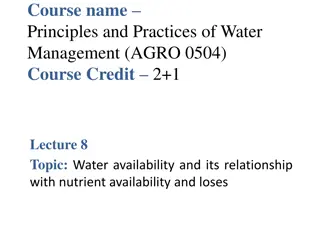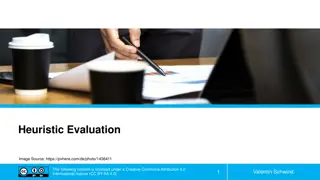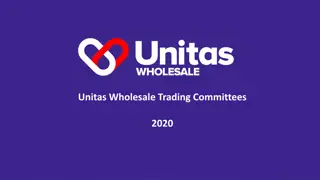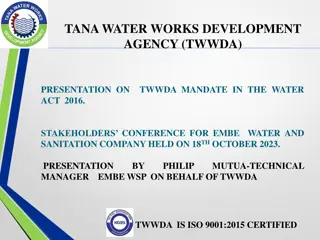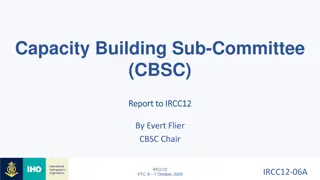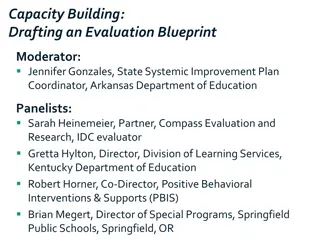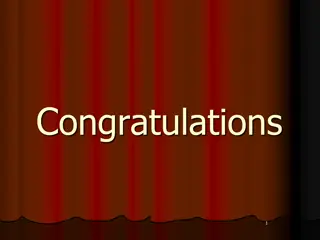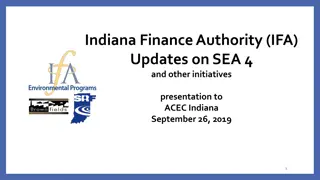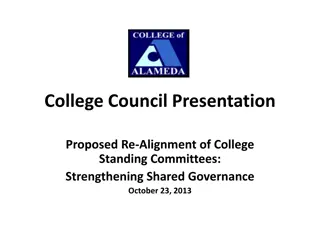Capacity Building and Evaluation Process for Water User Committees
Practical steps are outlined for enhancing the capacity of Water User Committees (WUCs) in their operational tasks through participatory evaluation processes. This involves identifying problems, educating the committee, ensuring adherence to roles, setting improvement priorities, and comparing viewpoints of stakeholders. The evaluation process includes categorizing success levels, facilitating discussions, and determining areas for enhancement within WUCs. Duration, participant involvement, and structured steps are detailed for effective capacity building and evaluation.
Download Presentation

Please find below an Image/Link to download the presentation.
The content on the website is provided AS IS for your information and personal use only. It may not be sold, licensed, or shared on other websites without obtaining consent from the author.If you encounter any issues during the download, it is possible that the publisher has removed the file from their server.
You are allowed to download the files provided on this website for personal or commercial use, subject to the condition that they are used lawfully. All files are the property of their respective owners.
The content on the website is provided AS IS for your information and personal use only. It may not be sold, licensed, or shared on other websites without obtaining consent from the author.
E N D
Presentation Transcript
based on a criteria method
The FWUC capacity to undertake their main tasks: Operation Maintenance Communication and relationship with farmers and other stakeholders Financial management / ISF collection Sustainability But only for schemes where infrastructures are operational, water is available at plot level and conflicts between users are manageable.
Identify practical problems faced by committee Teach FWUC committee about what they are supposed to do or to achieve Control that the FWUC is doing what it is suppose to do Define priorities for improvement Identify needs in term of external support Compare FWUC together in a sector approach
Participatory process: local stakeholders evaluate themselves Based on pre-defined criteria, so they can be compared Support team ask detail questions for people to think about what they do or not, what they can do or not 5 levels / criteria: 3 levels successful and 2 level not successful Two sub-groups contradict each other Farmers and village chief FWUC committee, Commune chiefs & Pdowram Excellent Good OK but to improve Very weak Non existent Compare point of views from different stakeholders Classification in categories to compare FWUC and for summary purpose Arrow presentation to facilitate global review by farmers
Duration: from 3 to 6 hours 3h for FWUC with limited activities 6h for FWUC with high level financial management Participants (10-15 people) FWUC committee members (3-5) Commune chiefs (1-3) Village chiefs (3-4) Farmers (1-3) PDOWRAM staff in charge (0-1) Facilitators (2-4) 1 ISC staff 1 MOWRAM - FWUC Department staff 1 Farmer & Water Net representative 1 project staff if any project supports the FWUC
Step 1: Presentation of the evaluation objectives and process Step 2: 2-3 sub-groups discussion (~5 people / group): review 33 criteria Step 3: Discuss each criteria position in plenary session and draw the arrow Step 4: Presentation of results, FWUC category and discussion on priority for improvement
MoU Sustaina - -bility Financial management ISF collection MoU Sustaina bility Financial management ISF collection Maintenance Maintenance Operation Operation Membership & database Membership & database Institutional building (election, GA) Institutional building (election, GA) Local authorities support Local authorities support Farmer organization Farmer organization Water control & economic performance Water control & economic performance
Category Not operational Category Description Description Irrigation is not (yet) available: scheme under construction or too damaged or not sufficient water resource available 0= 0= Not operational Irrigation is at least partially available and there is some farmer management, but very low performance, no clear organization between farmers, or less than one year experienced. The scheme is managed by an active FWUC with clear membership and an elected committee, but management level is weak: the FWUC can ensure only the basic scheme operation. The FWUC operates the scheme and implements some emergency maintenance. The FWUC try to collect ISF, but the amount and the percentage collected are low. The FWUC organizes yearly village or general assemblies. The FWUC is experienced and collects ISF at a good level; it has a budget and a good financial management. It ensures a regular maintenance, but still insufficient on the long term. I = I = Partially operational Partially operational II = II = Institutional construction Institutional construction III = III = Basic management Basic management IV = IV = Experienced management Experienced management The FWUC is financially and technically autonomous and sustainable. Financial control systems are in place. Maintenance is sustainable over the long term. The FWUC has signed a responsibility sharing agreement (MoU) with MOWRAM. V = V = Expert management Expert management
V: V: Prey Nup IV: IV: Stung Chinit III: O Veng, Ta Roat II: Kok Thnaot I: I: Baray, Trov Kord, Teuk Chha, Pram Kumpheak III: Sdao Kong, O Treng, II: Ponley, Po Pi Daem,
Institutional model? Election? Communication ? Technical capacity? Water availability? Infrastruc- tures? Support from MOWRAM ? Database ? Farmer participation & investment? Commune support? Financial manage- ment? ISF collection?
Based on the understanding and experience of local stakeholders (may hamper comparison with other FWUC) Not adapted for FWUC with limited or no activity, where there is only infrastructures Not all criteria are relevant for small FWUC based on farmers participation only, without formal organization. No criteria on popular issues for development agencies such as gender, environment (in order to keep it focused on the main practical problems) Not all issues are considered: it should not replace a full detailed evaluation -> not adapted for feasibility studies


